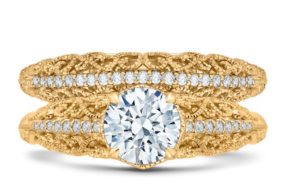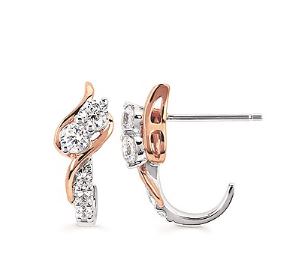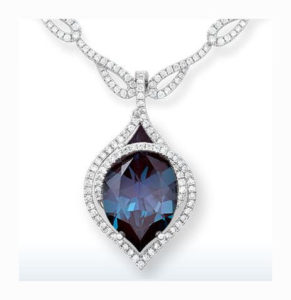Focused on 2017
The 2016 holiday selling season and year overall is expected to be up over 2015, according to the National Retail Federation.
The NRF predicts holiday business to grow by 3.6% to $655.8 billion, higher than the 10-year average of 2.5%, above the seven-year average of 3.4% since economic recovery began in 2009, and more than 3% in 2015. It also upgraded expectations for year-end sales growth from 3.1% to 3.4%. Online and non-store sales are expected to increase 7% to 10%, up from 6% to 9% forecasted earlier.
 Contributing factors include improved housing marketing, job growth, and higher wages. “Consumers have seen steady job and income gains resulting in continued confidence and greater use of credit, which bodes well for more spending,” says Jack Kleinhenz, NRF chief economist. He cites the presidential campaign as a “temporary distraction” with shoppers starting their gift buying later than they might otherwise. But Thanksgiving weekend saw 154 million shoppers make purchases at stores or online, up from 151 million in 2015.
Contributing factors include improved housing marketing, job growth, and higher wages. “Consumers have seen steady job and income gains resulting in continued confidence and greater use of credit, which bodes well for more spending,” says Jack Kleinhenz, NRF chief economist. He cites the presidential campaign as a “temporary distraction” with shoppers starting their gift buying later than they might otherwise. But Thanksgiving weekend saw 154 million shoppers make purchases at stores or online, up from 151 million in 2015.
Neil Shah of Shah Luxury, New York City says he heard retail traffic was down in October, but post election news is optimistic. Jeffrey Cohen, vice-president of sales for KGS Jewels, New York City was surprised by positive numbers on Wall Street and hopes this carries over to 2017.
Year-on-year sales of jewelry by retail stores in the United States grew slightly during the first half of 2016, according to a report by the online trading network, Polygon. Total sales by retail jewelry stores for the period of Q1-Q2 2016 rose to $15.931 billion, up from $15.787 billion in 2015. Year-end expectations are up over 2015 by low single digits, although some think retail jewelry sales will end flat. In 2015, total sales at U.S. retail jewelry stores reached $30.53 billion only a slight increase from 2014 ($30.51 billion). Recent Census Bureau figures show this has been the trend from 2011 to 2016, particularly in the last three years.
It hasn’t been easy for the U.S. jewelry industry. The Jewelers Board of Trade reported that 1,256 jewelry businesses closed this year, a 49% increase from 844 through the first three quarters of 2015. Reasons for the closures, which began in earnest in 2014, include retirements, consolidations, not adapting to changing retail landscape, and slow economic recovery/shrinking middle class.
“Jewelers are adapting to a fragmented and uncertain retail market,” according to a Polygon 2016 retail report. “Many brick-and-mortar jewelers have been struggling with slow sales and slimmer margins in recent years, situations partly attributed to the growing market share of online-only jewelry retailers and successful online sales strategies rolled out by major jewelry brands.”
 Maximize “A” Game
Maximize “A” Game
Shah says jewelers who know their audience, have a good marketing strategy, and are in touch with customers on social media are doing well. So it’s critical jewelers listen to their customers, says Cohen: “Don’t operate in a vacuum. “This is a tough industry; less is usually more. Remain focused on what’s working.”
Don’t go drastic–go “A” game, promotes Kate Peterson, president of Performance Concepts, Montgomery Village, Maryland. “Don’t change your stripe, just do a better job with your existing client base and get more people like them.”
Dana Cali, communications for Mastoloni, New York City advocates digital analytic tools for low-cost, high-yield data collecting. “It enables you to gauge audience reaction and alter your message quickly. There’s also flexibility to run tests to see what works best for you.”
You can track the jewelry customers browse on your website, how they interact with your brand on social media, what influencers they follow, and the items they buy. “If you realize your best customers take a certain path to doing business with you and they were all acquired via Instagram then your marketing becomes geared to getting others to travel a similar path,” says Jamie Gross, creative director ecommerce for Rio Grande, a Richline brand, Albuquerque, New Mexico
Missed Opportunities
Marty Hurwitz, CEO of MVI Marketing suggests jewelry sales may be suffering for those who aren’t capturing the attention of the newest generations of customers. Millennial bridal, self-purchasing female and multi-cultural consumers are what the Los Angeles-based marketing firm defines in a 2015 report as “The Holy Trinity of Jewelry Customers” for the next 25 years.
With millennials logging 18 hours of media use a day (The Wall Street Journal), Hurwitz advises jewelers be where they are. “Bring the in-store experience online,” promotes Jay Gerber for WR Cobb, East Providence, Rhode Island, citing as an example WRC’s customizable platform that includes different views, suggests matching bands, and has video loop for every engagement ring.
Hurwitz urges jewelers also focus their marketing on women buying for themselves, noting that female self-purchasers shop for other types of accessory up to six times a year. He says while inventories are primarily in white diamonds women want color and jewelers must become fashion experts.
He sees enormous potential for the Hispanic jewelry consuming population, which feels left out of the messaging, struggling to find jewelry store marketing and websites translated in Spanish. But jewelers who haven’t reached out before shouldn’t immediately double down, says Peterson. “Study the market. Work with people who understand the culture and how to get involved in the community.”
Bestsellers, Next Sellers
Bridal and anniversary jewelry remain bestsellers says Michael Lerche, president of Goldstar Jewellery, New York City, citing stackable diamond bands in white, yellow and rose gold outperforming. Cohen also sees two-stone and composite top bridal driving business. While Shah believes brands are critical, especially for bridal because of the stories and experiences they represent.
 Beyond bridal, Lerche says the industry has a lot of work to do to make jewelry exciting to consumers. Newness is a key factor, says Renee Privatt, business development manager for Ostbye, Minneapolis, Minnesota. “We’ve seen diamond fashion styles with rose gold and geometric shapes perform well, which indicates customers want updated, contemporary, sophisticated looks.”
Beyond bridal, Lerche says the industry has a lot of work to do to make jewelry exciting to consumers. Newness is a key factor, says Renee Privatt, business development manager for Ostbye, Minneapolis, Minnesota. “We’ve seen diamond fashion styles with rose gold and geometric shapes perform well, which indicates customers want updated, contemporary, sophisticated looks.”
Pearls continue to top trends, too. Cali cites demand for dainty fashion designs that are convertible and can be layered, as well as unique, oversized, baroque pieces. She also reports strands popular, especially Akoya and white South Sea, likely influenced by classic styles spied on the campaign trail.
Shah says the new frontier for jewelers is custom work. “We started our ‘As You Wish’ service in January and the results are phenomenal. Advances in CAD software and 3D printing allow us to help jewelers deliver personalized service.”
Moreover, the responsible sourcing of products is a purchase driver. Not only do consumers want to know the origin of materials, they want to ensure their sourcing didn’t harm people or the planet. “Products that speak to this trend are recycled like our silver sheet/wire line or come via responsible/transparent supply chains like our American Mined Gemstone Collection,” describes Denise Cabrera, product manager, display and packaging for Rio Grande.
Lab-created diamonds are benefitting as well. Hurwitz says MVI Research reports consumers asking about lab grown diamonds without prompt from major ad campaigns. Monica McDaniels for Chatham, a pioneer in lab created gemstones in San Marcos, California says millennials come to the brand for products that are conflict free, eco friendly, and revolutionary in technology.










